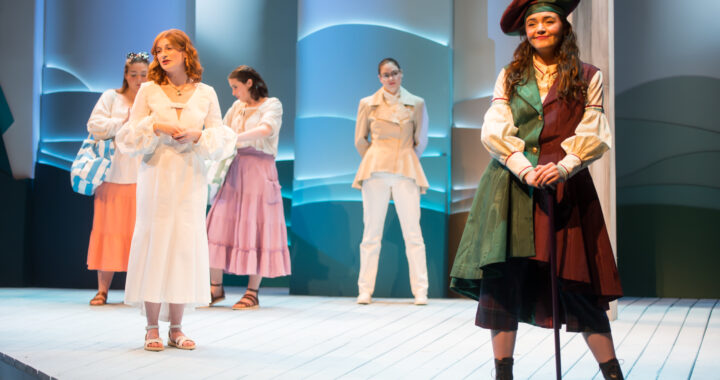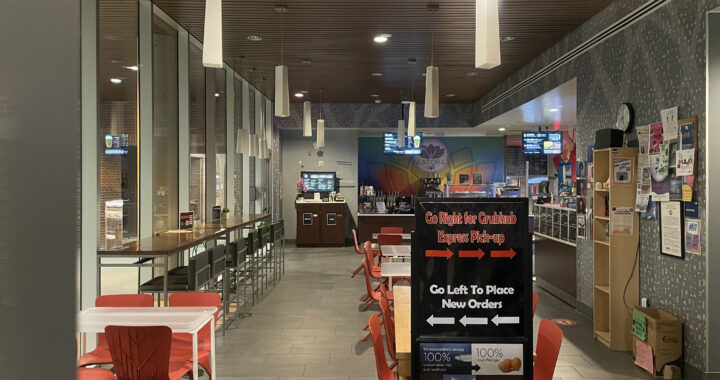Thousands Celebrate Photography at FotoWeek DC
3 min readBy ANA ESPIN
Each November, tens of thousands gather in the nation’s capital for FotoWeek DC, a multi-day, all-out celebration of some of the finest photography in the world.
Organizations such as National Geographic, the Goethe-Institute and the Corcoran Gallery of Art all threw their weight into the fair. They sponsored seminars, portfolio reviews, cocktail receptions and distinguished guest panels. Even a mixer at the former Spanish Ambassador’s residence was included in the line-up.
For those attendees that were merely interested in browsing, the visual displays didn’t disappoint. Photos ranged from Pulitzer Prize-winning images to those captured in a local Instagram contest. Another juried series was dedicated entirely to photos of women by female photojournalists.
There were 10 exhibitions alone at FotoWeek Central, the fest’s “main hub,” located at the historic Warner Building on Pennsylvania Avenue. Eye-popping pictures from around the corner to across the globe hung side by side along narrow corridors spanning nearly 40,000 square feet.
“101 Images for Press Freedom,” an exhibition by Magnum Photos in honor of Reporters Without Borders’ 25th anniversary, was quite possibly the most riveting. Here, observers observers viewed images that were so powerful they may never fade from memory.
There were the familiar portraits, such as the lone Chinese activist standing defiantly before the armored tank in Tiananmen Square, but other, less familiar pictures were no less rattling or enlightening.
In a shot taken by Jonas Bendiksen in 2000 on the Altai Plateau in Russia, cows lay dead, strewn along the edge of a cliff like swatted flies. The caption identified spacecraft fuels as the suspected culprit behind the contamination of the soil that killed the cows.
With each step, visitors were transported to Iran during the 1979 revolution, southern Sudan as victims fled famine, a street in Moscow where a man was stabbed in broad daylight and Germany where a young man sat atop the Berlin Wall.
Eugene Ang, a freshman at Georgetown University’s School of Foreign Policy, was among those soaking in the close-ups of the world.
“Seeing the history of the past 50 years unfolding in one room, in one sitting … you get a very good sense of the human side of [it] … of the situation and the context,” said Ang. “It’s very intimate [and] interesting to see like this.”
Ginny Sullivan, a Foto DC events coordinator, was eager to credit journalists’ courage with bringing such news to light.
“These are people that are putting themselves in harm’s way to tell the story of the world,” Sullivan said. “All stories are important and photography has a way of [expressing] those stories like no other medium. It’s a great way to see [and] understand the rest of the world.”
Access, in fact, is precisely what Foto DC Founder and Executive Director Theo Adamstein had in mind when he launched the organization a few years ago.
“I was thinking about photography and Washington, [and] it occurred to me that there was never a program or a competition where photographers could submit their work to be recognized, to be shown,” said Adamstein. “That’s how it all started.”
In some ways it has exceeded other major cities’ photography expos by its sheer volume of attendees and diverse number of partners and events, capitalizing on the unique fabric of Washington D.C.
“It’s grown so that we have over 300 photographers represented in all of [these] shows,” Adamstein said. “Our mission is to give exposure to photographers [through] multiple programs.”
He smiled as he readily acknowledged Foto DC’s further impact.
“But the flip side of it is the exposing of the work to thousands of people,” Adamstein said. “It’s kind of an exposure-exposing kind of concept.”












